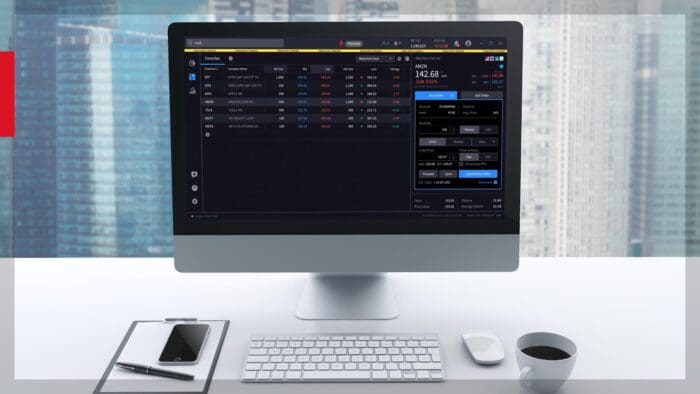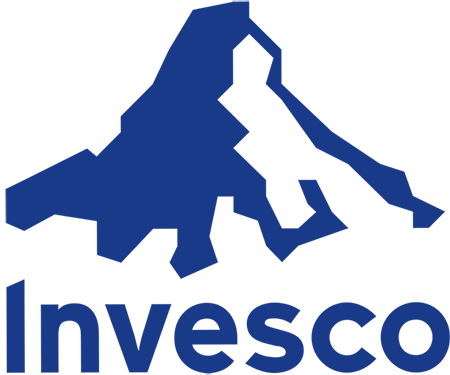Key takeaways
US Treasury yields
The greatest US vulnerability in the midst of the tariff war is likely its relatively high level of debt and foreign ownership of it.
European sentiment
There are headwinds facing the European economy from tariff wars, but fiscal stimulus is a powerful countervailing force.
Earnings outlook
As US earnings season begins, forward guidance is likely to matter more to markets than actual first-quarter earnings.
Last week brought us another chapter in the tariff wars as the US announced a 90-day pause on the implementation of the “Liberation Day” reciprocal tariffs against all countries except China. On Friday night, the US announced exemptions (for electronics and phones) to its tariff policy on China, although officials seemed to walk that back somewhat over the weekend. Not surprisingly, stocks and Treasuries experienced wild swings over the course of the week in response to tariff war developments while gold continued to climb higher.1
Investors are worried about a variety of things, most notably recession — and with good reason. It seems that volatility and uncertainty may be the only certainties going forward. We’ve gotten numerous questions from clients about what we should be watching for now. Here’s a short list of what to watch for in coming weeks:
Six things for investors to watch
- US consumer and business sentiment. The preliminary reading of the University of Michigan consumer sentiment survey for April fell to 50.8 from 57 in March, well below forecasts of 54.5. This was the lowest level since June 2022 and marks four consecutive months of decline in consumer sentiment.2 There’s a rough rule of thumb that if consumer sentiment falls by more than 20 points in a three-month period, it’s a strong indicator that a recession is in the offing. Consumer sentiment has now fallen slightly more than 20 points in the last three-month period, which is concerning. In addition, the New York Fed Survey of Consumer Expectations showed that mean unemployment expectations — or the probability that unemployment will be higher a year from now — rose to 44.0%, which is the highest level since April 2020.3 However, we’ve yet to see “soft data” really translate into “hard data.” So not only will we want to follow consumer sentiment in all the major surveys (Michigan, New York Fed, and Conference Board) closely going forward, but we’ll want to pay attention to the hard data to see how that sentiment translates into action — including of course US retail sales. We also want to pay attention to business confidence and its potential effect on hard data. A newly released study from industry group Chief Executive shows that 62% of CEOs and business owners expect a recession to occur in the next six months, up from 48% in March.4 National Federation of Independent Businesses (NFIB) Small Business Optimism also declined materially, but is only slightly below the long-term average.5
- European economic and business sentiment. There are headwinds facing the European economy from US tariff wars. However, there’s a powerful countervailing force: fiscal stimulus. Sentiment readings will give us a sense of how positive the reaction is to European plans — especially Germany’s — to ratchet up defense and infrastructure spending, and how much they are able to soften the blow of high tariffs. We expect this seismic change to have a significant impact on sentiment, and this soft data is then likely to translate into better hard data, including industrial production and retail sales. This will take many months to unfold, but we should start to see signs in sentiment readings in the very near term.
- Chinese economic data. Similarly, there are headwinds facing the Chinese economy coming from US tariffs. However, China is delivering substantial fiscal stimulus, which should also be a powerful countervailing force. We have started to see “green shoots,” signs that the economy is recovering, such as an increase in China’s credit growth in March, but we’ll be looking for more hard economic data, including domestic consumption since that is one key area policymakers are targeting.
- Earnings outlook. US earnings season has begun. There seems to be an assumption that earnings will lift markets and cause investors to look beyond tariffs. However, it seems markets are unlikely to care about first-quarter earnings — which are a “rearview mirror” event — and are more likely to care about guidance. And that could prove negative for markets. It’s always important to focus on guidance in these earnings calls, but now more than ever. Insights into how companies are managing through such a high level of uncertainty, and what their economic outlook is, will likely shape market moves.
- US consumer inflation expectations. While actual US inflation readings have eased — both the US Consumer Price Index and Producer Price Index prints for March were lower than expected — US consumer inflation expectations have surged higher. In particular, five-year ahead inflation expectations have continued to surge and suggest longer-term inflation expectations haven’t met the litmus test of being “well anchored” — which policymakers are concerned with.6 Coupled with falling consumer sentiment, this survey data suggests consumers are expecting a stagflationary environment. We’ll closely follow upcoming soft and hard data for confirmation of this expectation, with the understanding that a change in policy could easily avert this fate.
- US Treasury yields. The greatest US vulnerability in the midst of the current tariff war is likely its relatively high level of debt and foreign ownership of it. Just last year, the US’s cost to service its debt climbed so high that it exceeded its entire defense budget for the first time.7 The economic historian Niall Ferguson has argued that such a scenario isn’t sustainable for a great power. Other countries know the high level of US debt is a serious vulnerability; if rates rise, it causes the US to spend significantly more servicing its debt.
It seems that fewer countries are trusting the US — and therefore US Treasuries as a “safe haven” asset class. This has resulted in greater buying of gold, which seems to have become the preferred “safe haven” asset class of choice.
Other countries may also want to find ways to use the US’s debt vulnerability as a weapon in the tariff fight, punishing the US for its tariffs by selling US Treasuries and driving up borrowing costs. Some have whispered that the spike in Treasury yields was responsible for the US placing its 90-day pause on Liberation Day tariffs assessed against a number of countries. We’ll want to follow US Treasury yields as that may very well help dictate the course of tariff wars going forward. Recall US Treasury Secretary Scott Bessent’s goal of driving down the 10-year US Treasury yield, which has been thwarted in recent days.
Looking ahead
Looking ahead, it’s important for clients to recall their investing time horizon, which is typically far longer than an average recession or a presidential term. That can mean maintaining one’s investment policy, remaining well diversified, and even looking for opportunities to take advantage of the uncertainty and volatility.
Dates to watch
| Date | Report | What it tells us |
|---|---|---|
| April 14 | New York Fed US Consumer Inflation Expectations | Tracks consumer expectations for US inflation. |
| April 15 | UK unemployment rate | Indicates the health of the job market. |
| Eurozone industrial production | Indicates the economic health of the industrial sector. | |
| Eurozone ZEW Economic Sentiment | Measures economic sentiment in the eurozone for the next six months. | |
| NY Empire State Manufacturing Index | Rates the relative level of general business conditions in New York state. | |
| Canada Consumer Price Index (CPI) | Tracks the path of inflation. | |
| China Gross Domestic Product (GDP) | Measures a region’s economic activity. | |
| China industrial production | Indicates the economic health of the industrial sector. | |
| China unemployment rate | Indicates the health of the job market. | |
| April 16 | UK Consumer Price Index (CPI) | Tracks the path of inflation. |
| Eurozone Consumer Price Index (CPI) | Tracks the path of inflation. | |
| US retail sales | Indicates the health of the retail sector. | |
| US industrial production | Indicates the economic health of the industrial sector. | |
| Bank of Canada Monetary Policy Decision | Reveals the latest decision on the path of interest rates. | |
| Bank of Korea Monetary Policy Decision | Reveals the latest decision on the path of interest rates. | |
| Australia unemployment rate | Indicates the health of the job market. | |
| April 17 | Bank of England Credit Conditions Survey | Reports on trends and developments in credit conditions. |
| European Central Bank Monetary Policy Decision | Reveals the latest decision on the path of interest rates. |
—
Originally Posted on April 15, 2025
Treasuries, sentiment, and earnings: What investors need to watch by Invesco US
Footnotes
- Source: Bloomberg L.P., as of Apr. 11, 2025. The S&P 500 Index started at 5074.08 on Apr. 4, 2025, fell to 4982.77 on Apr. 8, 2025, rose to 5456.9 on Apr. 9, 2025, and finished at 5636.36 on Apr. 11, 2025. The 10-year US Treasury yield closed at 4.009% on Apr. 4, 2025, and closed at 4.494% on Apr. 11, 2025. Gold rose from 3038.24 on Apr. 4, 2025, to 3237.61 on Apr. 11, 2025.
- Source: University of Michigan Survey of Consumers, preliminary April survey, Apr. 11, 2025.
- Source: New York Fed Survey of Consumer Expectations, Apr. 14, 2025.
- Source: Chief Executive poll, Apr. 14, 2025.
- Source: NFIB Small Business Optimism Index, Apr. 8, 2025.
- Source: University of Michigan Survey of Consumers, preliminary April survey, Apr. 11, 2025.
- Source: Committee for a Responsible Federal Budget, May 10, 2024.
Disclosure: Invesco US
This does not constitute a recommendation of any investment strategy or product for a particular investor. Investors should consult a financial advisor/financial consultant before making any investment decisions. Invesco does not provide tax advice. The tax information contained herein is general and is not exhaustive by nature. Federal and state tax laws are complex and constantly changing. Investors should always consult their own legal or tax professional for information concerning their individual situation. The opinions expressed are those of the authors, are based on current market conditions and are subject to change without notice. These opinions may differ from those of other Invesco investment professionals.
NOT FDIC INSURED
MAY LOSE VALUE
NO BANK GUARANTEE
All data provided by Invesco unless otherwise noted.
Invesco Distributors, Inc. is the US distributor for Invesco Ltd.’s Retail Products and Collective Trust Funds. Institutional Separate Accounts and Separately Managed Accounts are offered by affiliated investment advisers, which provide investment advisory services and do not sell securities. These firms, like Invesco Distributors, Inc., are indirect, wholly owned subsidiaries of Invesco Ltd.
©2024 Invesco Ltd. All rights reserved.
Disclosure: Interactive Brokers Third Party
Information posted on IBKR Campus that is provided by third-parties does NOT constitute a recommendation that you should contract for the services of that third party. Third-party participants who contribute to IBKR Campus are independent of Interactive Brokers and Interactive Brokers does not make any representations or warranties concerning the services offered, their past or future performance, or the accuracy of the information provided by the third party. Past performance is no guarantee of future results.
This material is from Invesco US and is being posted with its permission. The views expressed in this material are solely those of the author and/or Invesco US and Interactive Brokers is not endorsing or recommending any investment or trading discussed in the material. This material is not and should not be construed as an offer to buy or sell any security. It should not be construed as research or investment advice or a recommendation to buy, sell or hold any security or commodity. This material does not and is not intended to take into account the particular financial conditions, investment objectives or requirements of individual customers. Before acting on this material, you should consider whether it is suitable for your particular circumstances and, as necessary, seek professional advice.




















Join The Conversation
For specific platform feedback and suggestions, please submit it directly to our team using these instructions.
If you have an account-specific question or concern, please reach out to Client Services.
We encourage you to look through our FAQs before posting. Your question may already be covered!